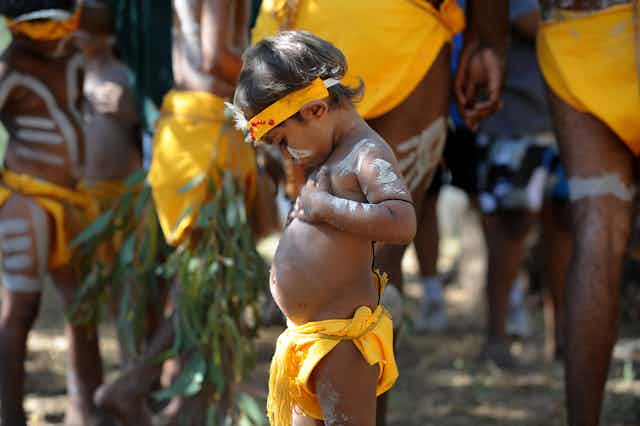The fairly negative seventh report on Overcoming Indigenous Disadvantage, released last week, claimed to:
… measure the wellbeing of Aboriginal and Torres Strait Islander Australians.
However, this biennial effort continues to record mainly no changes or some increased deficits in wellbeing. The language has changed, in response to Indigenous group concerns, from emphasising gaps to reporting strengths. But official data continues to record substantial failures.
What did the report show?
Data collected by the Productivity Commission showed progress in three of seven targets and two of six headline indicators.
Of the 38 strategic areas for action, there was progress in:
six of eight early child development measures;
four of four economic participation measures;
two of eight governance, leadership and culture measures;
two of eight healthy lives measures;
one of three education and training measures;
one of three home environment measures; and
zero safe and supportive communities measures.
The latter five indicators show a serious lack of both data and change. Importantly, however, these categories also show where government processes fail to connect appropriately with the problems and communities involved.
The governance, leadership and culture scores indicate a lack of community and cultural participation in decision-making, and a lack of funders’ access to cultural knowledge.
The data raises core questions of why, despite substantial spending, serious difficulties continue.
The report claims to have been used by governments and the broader community to understand the nature of Indigenous disadvantage and inform the development of policies to tackle the issues. But the results suggests this is not occurring.
Continued health, education and community deficits suggest a failure to use the data collected over more than a decade to reformulate various funding processes.
Therefore, despite the substantial costs, time and goodwill involved, the report fails to achieve its stated intentions.
The broader context
While some of the state and territory governments are recognising problems with their processes, and have started to act on these, recent Commonwealth funding changes have not taken research findings into account and have failed to seriously engage Indigenous communities or individuals – with problematic results.
There are no signs that Indigenous Affairs Minister Nigel Scullion has taken any notice of either validated research data from government sources or informed feedback from a range of Indigenous-run services over the past few years.
The latter have been critical of current policies and funding processes that are top-down decision-making, short term and – most importantly – failing to engage and partner with communities and culturally appropriate service deliverers.
This report contributes to a record, over time, of the failure of those with power to seriously tackle both the formal evidence and community feedback on what works.
Past and current inequities of Indigenous peoples have deep roots that require attention. We can only hope the increased awareness of Indigenous traditional and professional expertise in these areas will be acknowledged and recognised.
Not all bad news
The report did find limited but significant gains that matter. These included:
mortality rates for children improved significantly – particularly for 0-1-year-olds, whose mortality rates more than halved;
education improvements such as increases in the proportion of 20–24-year-olds completing year 12 or above and the proportion of 20–64-year-olds with or working towards post-school qualifications; and
the proportion of adults whose main income was from employment increased from 32% in 2002 to 43% in 2014-15, with household income also increasing over this period.

